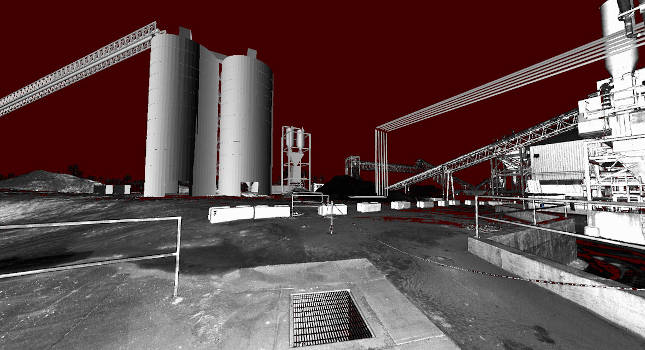Proper selection and life-long maintenance of bearings are critical aspects of any plant, especially where equipment operates in severe environments.
Proper selection and life-long maintenance of bearings are critical aspects of any plant, especially where equipment operates in severe environments. Ordering the right bearings, taking precautions in both handling and installation, and performing the necessary preventive maintenance adds up to longer bearing life, increased productivity, and long-term cost savings.
It is important initially to review and fully understand the bearing specifications for a piece of equipment. Bearings selected for machinery operating in hostile environments or exposed to severe service often have special construction, materials, radial internal clearances, and mounting requirements.
The original equipment manufacturer (OEM) should be consulted to define the exact replacement part numbers. Bearings designed for severe service have modifications to standard part numbers or are unique with a special part number.
These are not standard catalog items, but can have interchangeable boundary dimensions. Special modifications are noted in OEM manuals or marked on the bearing face (Fig. 1) to ensure that the replacement is equivalent in all aspects.
Installation practices
Keep a record of all maintenance activity, noting the date, equipment model and serial number, bearing assembly and serial number if applicable, and manufacturer. Include comments regarding housing or shaft reconditioning and other components which were replaced.
These records can be essential in establishing trends in bearing performance, diagnosing service intervals, and planning for future maintenance.
Lubrication
Proper lubrication is a critical part of bearing maintenance. Type of lubricant, cleanliness, quantity, and frequency of relubrication are important. Oil viscosity is selected to maintain effective film separation, preventing wear and surface damage (Fig. 2). The lubricant can also help reduce operating temperature and minimize contamination.
The lubricant must meet all OEM and supplier specifications. Manufacturers or distributors should provide detailed recommendations on storage conditions, maximum shelf life, delivery systems, filtration levels, and other precautions. Consultation is recommended if any conditions, even those which appear less than significant, change during operation.
Normally a grease prepack or oil sump is provided to ensure a lubricant film develops in the bearing on startup. Recirculating or oil mist systems should be equipped with flowmeters that sound an alarm in the event of a malfunction or no-flow condition.
Mixing different grades and brands of greases or oils can be disastrous. Lubricants must be completely compatible to function properly over a long time. Because of significant chemical differences in formulation (thickening agents, base oils, additives, etc.), some lubricants cannot be mixed with others.
Before changing brands, qualify compatibility with the suppliers. This check may require testing. If a change is contemplated and compatibility is questioned, be sure to plan the time and expense to remove all of the old lubricant from the lines, pump, bearings, and housing.
Monitor bearing and oil temperature on a consistent basis. Bearings operating under severe conditions that generate more heat due to rolling contact friction or bearings exposed to high ambient or process temperatures place more demands on the lubricant. Oil service life is decreased drastically when operating over 180°F, even with oxidation inhibitors.
Avoiding contamination
A small amount of debris can disrupt the oil film, resulting in surface damage (Fig. 3). Control of lubricant system cleanliness is important. Check tanks, central reservoir, plumbing lines, and connections. Central tanks should be supplied with magnetic traps and routinely monitored to prevent significant buildup.
Avoid excessive agitation of the reservoir. It is often sized to allow sedimentation of larger particles. Clean pipes and connections thoroughly to avoid introducing contaminants.
When using a manual grease gun or mobile pump, make sure fittings are protected from dirt by using shrouds and/or dust caps. Also, when following a manual lube schedule, post signs and procedures and record dates and comments. An operator is often able to spot a leaking seal or changes in grease consistency that can help initiate diagnostic activity rather than emergency troubleshooting.
Do not rely solely on filters to handle contamination. Even refining the level of filtration can generate maintenance problems. In harsh environments, increased demands on filters are typical, requiring better planning for scheduled inspection and/or replacement of filter elements. Significant flow restrictions or complete bypassing of filters can lead to bearing damage.
When possible, establish routine collection and testing of oil or grease samples for consistent properties and contamination. Look for fluids or solid particles which may point to unseen problems.
Predictive maintenance
Vibration analysis allows quick detection of any change in frequency signature. Significant changes in vibration are detectable and can be correlated to key frequencies of rotating bearing elements (Fig. 4). Depending on the size of an operation and type of equipment, vibration analysis equipment can be purchased, leased, or brought in by an outside source on a contract basis.
Monitoring bearing operating temperatures can be done with contact thermocouples, infrared, and noncontact thermographs. Monitoring allows the operator to determine normal operating limits and set alarms to stop equipment and avoid significant damage to bearings and surrounding components.
The best maintenance plan combines installation, lubrication, and predictive data to record and trend bearing performance. Bearing suppliers can provide valuable assistance in predicting bearing performance. Based on a complete understanding of the equipment and operating conditions, suppliers can offer both service and application engineering assistance.
Damage analysis/performance assessment
Changes, even seemingly small ones in equipment or processes, can have a significant impact on bearings. For instance, a 10% increase in reaction force results in a 30% decrease in theoretical fatigue life. Such a change can happen due to increased belt or chain tension, increased motor torque, higher pressure due to metal cutting or forming, heavier roll contact pressure due to material changes, misalignment, and imbalanced loads.
Bearing life is inversely proportional to shaft speed: A 10% increase in speed reduces bearing life 10%. Higher loads and speeds also result in more internal heat generation, forcing greater demands on lubrication. Such changes in process or equipment operation are often not reported to the maintenance department.
Bearings are often damaged and removed from service. If the damage is not severe, a complete damage analysis can be performed. Many damage modes can be characteristic of problems which are seen in all industries, but are often accelerated by severe service modes.
Visual inspection can pinpoint the majority of damage; however, some bearings require a detailed laboratory review by specialists. If the damage mode is not obvious, possibly due to a combination of sources, it is preferred that all components are preserved for field examination or returned to the manufacturer.
— Edited by Joseph L. Foszcz, Senior Editor, 630-320-7135, [email protected]
Key concepts
Bearings used in hostile environments often have modifications that are not obvious to the naked eye.
Handle bearings just like precision instruments: Carefully and safely.
Install bearings only on/in properly sized shafts and housings using clean tools and precision instruments.
Safety recommendations
Safety should always be a top priority while performing equipment maintenance. This consideration is especially true when handling or replacing heavy bearings and components.
– Watch for pinch points. Keep fingers outside the assemblies.
– Do no attempt to lift the entire bearing assembly using shipping straps.
– Use only nylon slings, hooks, and fixtures that are clean, in good condition, and carefully inspected to ensure they are adequate for the job.
– Exercise caution when handling bearings. They are covered with fluid coatings for protection and can be slippery.
– Wear safety glasses and protective covering for skin that might be exposed to the bearing coatings.
– When heating bearings for installation, do not expose them to direct flame. This action represents a fire hazard and can affect the bearing steel.
– Never strike a bearing with a large hammer or similar hard object. Such strikes can result in brittle fracture of the bearing, dislodging sharp metal particles, and result in personal injury. Also, strikes can cause cracking or brinnelling which reduces bearing service life.
– Heavily damaged bearings can, under some conditions, generate extreme heat and present a fire hazard.
Factors in bearing specifications
– Operating temperature
– Rate of temperature change
– Degree of potential contam-ination
– Operating speeds
– Acceleration
– Vibration
Maintenance tips
– Keep bearings stored in their anticorrosive, protective wrapping until installation on the equipment.
– Always use clean tools in a clean environment.
– Properly gauge new or used shaft and housing diameters in multiple clock positions. A 12-point measurement system is recommended for inspection of the bearing journal and housing bore.
– Use sine bar gauges (1:12 or 1:30) to evaluate the diameter and proper angle of taper journals.
– Check that the shaft and housing have proper conformity; that is, uniform contact over more than 80% of the entire contact surface.
– Use suitable methods (dye penetrant, ultrasonic, etc.) to inspect for shaft or housing fatigue cracking. This approach is especially true when repairing older equipment. Similar tests are recommended for new replacement components.
– Examine and clean all lubrication holes.
– Examine and clean any holes and grooves used for hydraulic-assist mounting.
– Use procedures recommended by machine or bearing manufacturers for assembly.
– Measure for radial or axial internal clearance before and after mounting. Failure to achieve recommended clearances can result in poor performance, over-heating, or early damage.
Seal maintenance
– Use only OEM specified seals. They were selected to match machine operating conditions.
– Implement external shields or procedures to avoid debris buildup on or around seals.
– Routinely check radial lip seal condition for flexibility, hardening or cracking, and shaft contact.
– Look for signs of leaking and replace damaged seals as soon as possible.
– Avoid purging excessive grease past lip seals.Seal lips can lose contact and effectiveness.
– Use care when applying spray equipment for periodic external cleaning. Many rotating seals are not designed to resist steam or direct impingement of high-pressure sprays. It is very easy to damage the seal and force contaminants into what may be an otherwise clean housing.
– When disassembling large equipment, avoid lifting with chains, wire rope, or dirty slings that might score sealing surfaces.
– If the rubbing surfaces are worn, resurface and grind them to original specifications for finish and diameter.
– Clean out radial and face labyrinth seal grooves. Check for diameter and clearance, avoiding inappropriate rubbing contact.When a failure occurs
– Assemble maintenance records and record any unusual data leading up to the shutdown.
– Remove the bearing from the shaft and housing. Avoid further damage to the bearing.
– Take a sample of the lubricant from the bearing or the housing for analysis.
– If a fracture has occurred, do not try to put the pieces back together. Rubbing them together destroys microscopic fracture surfaces, limitingfurther diagnosis.
– Preserve the pieces with oil or anticorrosive fluids. Cover and store them in a dry location.



